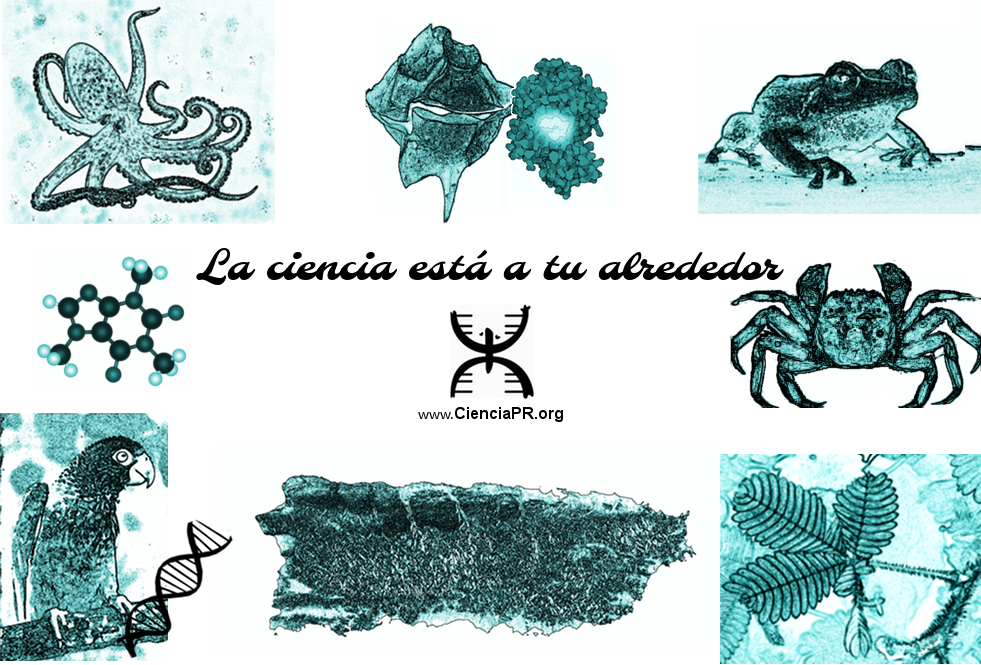Celebrating the natural wonders of Puerto Rico
Submitted by Giovanna Guerrero-Medina on
To celebrate the holidays and the coming of a new year, we designed a new shirt to highlight the natural wonders and recent discoveries of Puerto Rico. We hope that Puerto Rico continues to serve as source of wonder, inspiration, discovery, and understanding for many generations to come.
Can you identify all the images presented in the design? We have the explanation at the bottom of the image
In a clockwise direction, starting on the left:
- Common octopus (Octopus vulgaris) - This species is found in very different environments, from the cold waters of the Antarctic to the tropical waters of the Caribbean. In 2012, the laboratory of Dr. Joshua Rosenthal at the Institute for Neurobiology of Puerto Rico discovered how these animals do to adapt to drastic changes in temperature and environment. Octopuses have the ability to edit their RNA (the intermediate between gene and protein) which allows them to change their proteins and cellular functions quickly. A change in the RNA of an ion channel - a protein necessary for the nervous system to function well - allows octopuses in Antarctica to move as quickly as their relatives in Caribbean waters.
- Dinoflagellates and luciferase - A type of microorganism called dinoflagellate is responsible for the beautiful bioluminescence of La Parguera, the Fajardo Lagoon and Mosquito Bay in Vieques. Dinoflagellates have a protein called luciferase which emits a blue-green color when the waters are around the organism move suddenly.
- Coqui (Eleutherodactylus portoricensis) - There are 17 species of coqui in Puerto Rico. Their singing is not a serenade for us, but for females of their species, which find their partners in the dark night thanks to the clear and loud call.
- Buruquena (Epilobocera sinuatifrons) - Buruquena is the name given by the Taino Indians of Puerto Rico to the brown freshwater crab. The Puerto Rican buruquena do not have to migrate because their larval stage is completed in the egg that is attached to the abdomen of the female.
- Morivivi (Mimosa pudica) - An extremely common plant in Puerto Rico. As children, we have fun touching it and causing it to close "in shame". The movement of the leaves is the result of loss of water and the collapse of some cells at the bottom of the leaf.
- Geology of Puerto Rico - 40% of Puerto Rico is covered with mountains, 35% with hills and the remaining 25% is occupied by plains, mainly in the northern coastal region.
- Puerto Rican parrot (Amazona vittata) and DNA molecule - 2012 brought the sequencing of the genome of the Puerto Rican parrot by the laboratory of Dr. Taras Oleksyk and Puerto Rico Genome Center at the University of Puerto Rico, Mayagüez. The Puerto Rican parrot is an endangered species. The DNA code will help future conservation efforts.
- Caffeine - The main chemical structure of the compound of coffee. Caffeine is a molecule that enters our central nervous system and that "wakes us up" when it counteracts the action of a compound called adenosine, which serves to reduce the activity levels in the brain during sleep. Puerto Rican coffee is of great quality and popularity.









